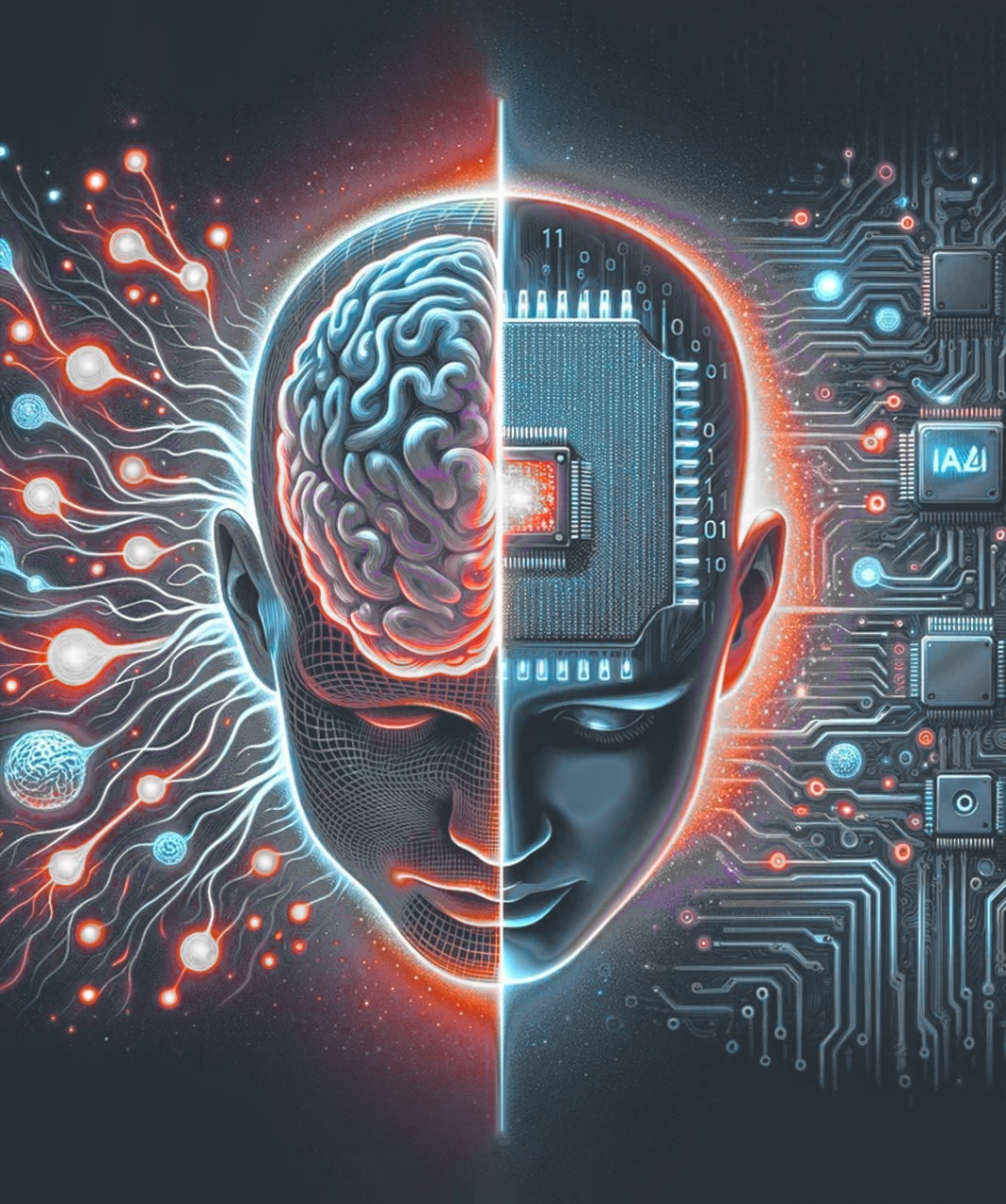Rethinking Creativity: Biological vs. Digital Intelligence
Investigating both biological and digital forms of intelligence is a key focus in modern scientific research, providing deep understanding into cognition, consciousness, and what the future holds for intelligent entities. Creativity is identified as a vital aspect in this investigation, serving as a distinguishing factor between biological and digital intelligence. This piece examines the subtleties of creativity as it appears in both the biological and digital spheres, discussing how each exhibits this intricate characteristic and the possibilities that arise from their joint efforts.
Biological Intelligence: The Natural Paradigm
Biological intelligence emerges from the intricate network of neurons and synapses within the brain, a result of millions of years of evolutionary refinement. It encompasses a wide range of cognitive functions, including learning, memory, problem-solving, and emotional understanding. This type of intelligence is characterized by its adaptability, allowing organisms to interact with and adapt to their environments in complex ways. The human brain, with its approximately 86 billion neurons, represents the pinnacle of biological intelligence, capable of abstract reasoning, creativity, and self-awareness.
Key Features:
– **Adaptability and Learning**: Biological systems learn from experiences, adapting to new situations without explicit reprogramming.
– **Energy Efficiency**: The human brain operates on roughly 20 watts of power, showcasing remarkable efficiency.
– **Consciousness and Emotional Understanding**: Biological intelligence is intertwined with consciousness, emotions, and subjective experiences.
Digital Intelligence: The Constructed Paradigm
Digital intelligence, or artificial intelligence, is the product of human design, created through algorithms, data, and computational models. It aims to mimic or exceed human cognitive functions, with applications ranging from simple tasks to complex problem-solving and decision-making processes. AI systems, particularly those using machine learning and deep learning techniques, have shown remarkable capabilities in pattern recognition, language processing, and even creative endeavors such as art and music composition.
Key Features:
– **Processing Power and Speed**: Digital systems can process vast amounts of information at speeds unattainable by biological brains.
– **Scalability**: AI systems can be scaled up with additional computational resources, allowing for enhanced performance and capabilities.
– **Task Specialization**: Digital intelligence excels in specific, well-defined tasks, often outperforming humans in accuracy and efficiency.
Intersection and Integration
The intersection of digital and biological intelligence is a fertile ground for innovation. Neuro-inspired computing models, such as neural networks, draw inspiration from the structure and function of the brain, seeking to replicate its efficiency and adaptability. Brain-computer interfaces (BCIs) represent another point of convergence, allowing direct communication between the brain and digital devices, potentially enhancing human capabilities or restoring lost functions.
Future Directions and Ethical Considerations
As AI continues to advance, questions arise about the future relationship between digital and biological intelligence. Will AI augment human capabilities, or could it eventually surpass and replace them? Ethical considerations, including privacy, autonomy, and the potential for AI-driven inequality, are paramount as we navigate this evolving landscape.
Creativity in Biological Intelligence
Biological creativity is as diverse as life itself, rooted in the depths of human consciousness and experience.
· Uniqueness: Each individual’s creativity is a reflection of their unique experiences, emotions, and cognitive processes, leading to original and often unexpected ideas.
· Breaking Boundaries: Human creativity excels in divergent thinking, forging novel connections, challenging conventions, and exploring uncharted territories.
· Intuitive Leaps: Beyond logical reasoning, biological creativity thrives on intuition, “aha” moments, and the capacity to envision possibilities that extend far beyond existing data.
· Subjectivity as a Strength: Our creativity is fueled by subjective perspectives, emotional depth, and personal interpretations, driving diverse artistic expressions and innovative problem-solving.
Creativity in Digital Intelligence
Digital intelligence, or AI, has shown remarkable generative abilities, pushing the boundaries of what machines can create.
· Generative Capabilities: Leveraging vast datasets, AI systems can produce creative outputs across various domains, including art, music, and literature, albeit through pattern recognition and recombination.
· Data-Driven Innovation: AI’s analytical prowess enables it to uncover novel solutions and combinations, potentially unseen by human minds, by sifting through extensive data.
· Pushing Boundaries Within Rules: AI-driven creativity excels within predefined constraints, optimizing patterns, styles, and techniques within its training domain.
· Limited Scope: Despite its advancements, AI’s creative endeavors are generally confined to its training domain, lacking the broad generalization and pioneering spirit characteristic of human creativity.
The Intersection: Creativity in Collaboration
The synergy between human and AI creativity holds unparalleled promise, combining the strengths of both realms.
· Human-AI Partnerships: Collaborative efforts can harness human intuition, vision, and emotional resonance, complemented by AI’s ideation, prototyping, and exploration capabilities.
· Augmenting Human Creativity: AI tools offer new vistas for human creativity, suggesting novel directions and streamlining the creative process through rapid iteration and refinement.
Conclusion
As we navigate the complex landscape of intelligence and creativity, it becomes evident that both biological and digital forms bring distinct advantages to the creative table. While human creativity is imbued with depth, emotion, and intuition, digital intelligence offers precision, speed, and the ability to process vast datasets. The future likely lies in leveraging these complementary strengths, fostering a collaborative ecosystem where human and AI creativity not only coexist but thrive, pushing the boundaries of innovation and artistic expression.
The dialogue between digital and biological intelligence is not just an academic pursuit but a journey that could define the future trajectory of intelligent life. As we advance in our understanding and capabilities, the synthesis of these two forms of intelligence may unlock new realms of possibility, challenging our conceptions of what it means to be intelligent, conscious, and human.







